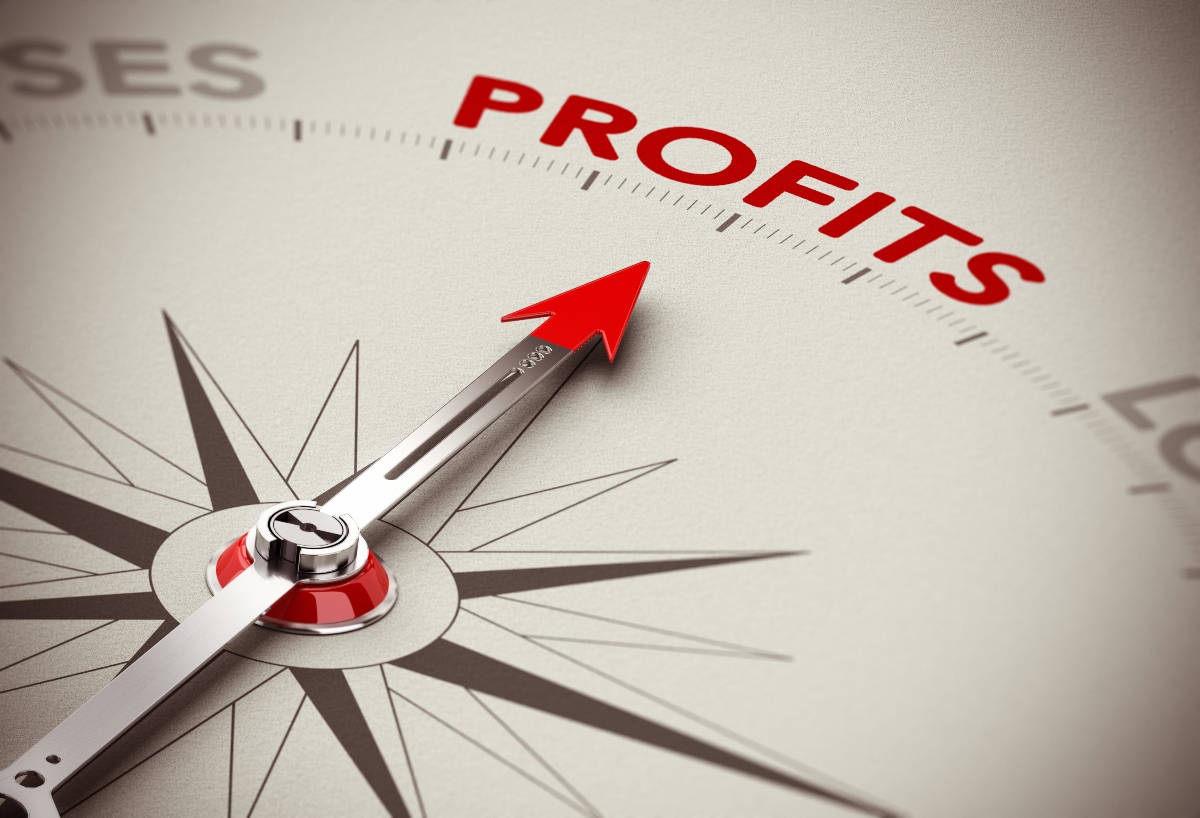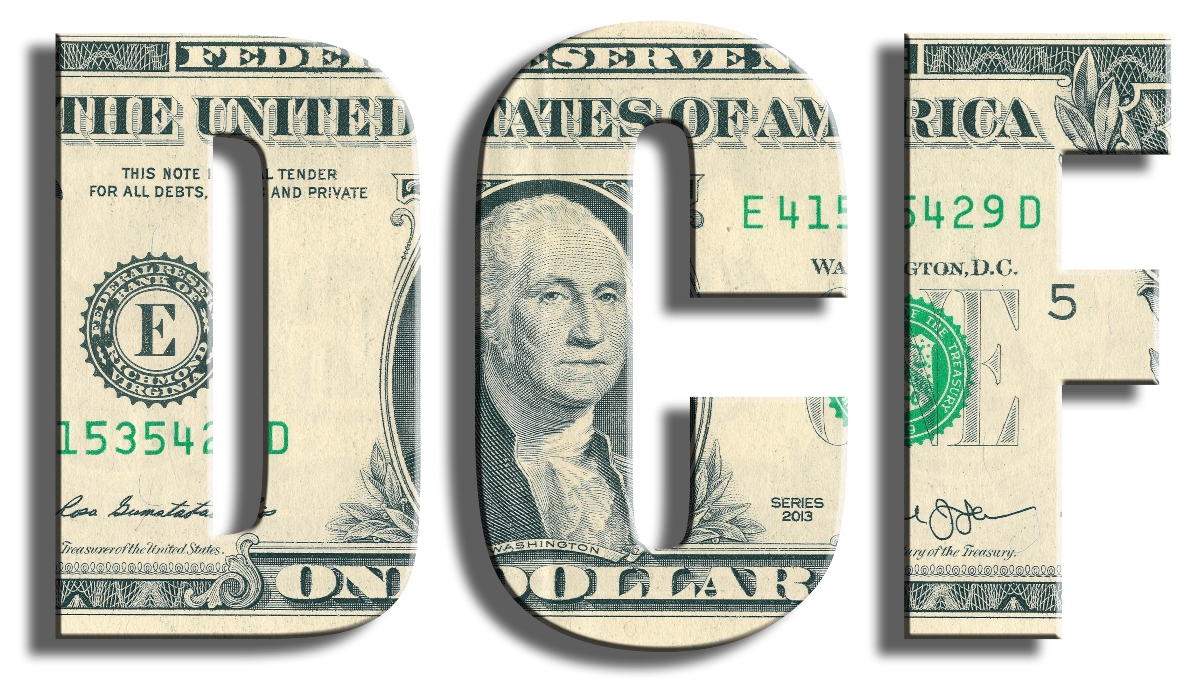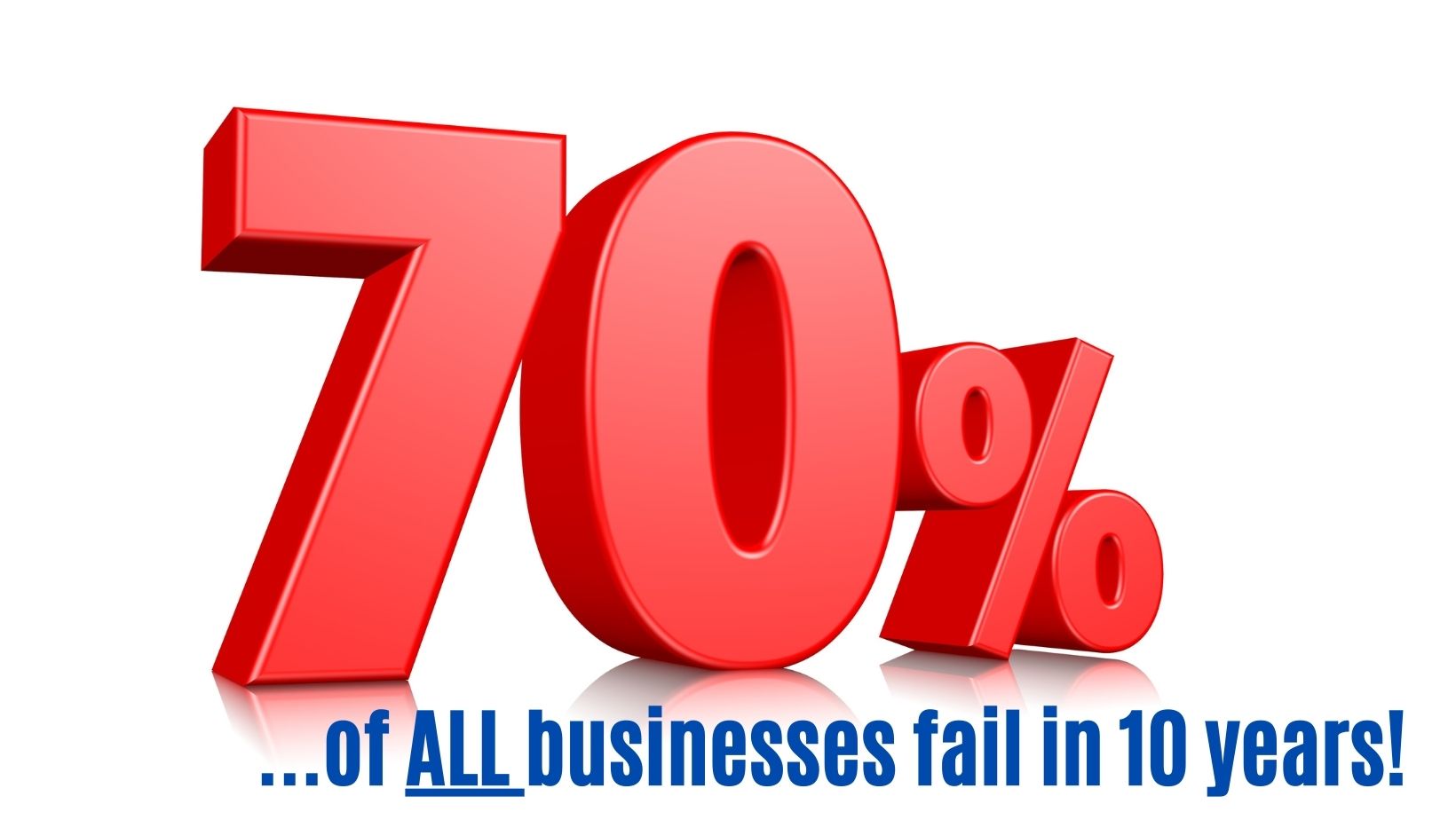“I have no complex about wealth. I have worked hard for my money producing things which people need. I believe that the able industrial leader who creates wealth and employment is more worthy of historical notice than politicians or soldiers.” – J. Paul Getty, American billionaire.
Business valuation, if you don’t know what you’re doing, and sometimes even if you do, is an exercise in false precision. Whatever technique you use, you’ll always arrive at an estimate of value- a number- any number- is worth only what goes into it.

Before you rely on numbers for decision-making, you first have to know what the number means, and even then, you can’t be sure about it because you also have to know how the number was derived.
Company fair value is one of the more important numbers you’ll ever use in your business, yet look at the shaky foundation on which it’s built. The calculations are clear and precise- basic arithmetic.
- But what about the numbers that go into the calculations?
- What is the appropriate investor’s time horizon?
- What is the “right” required rate of return?
- What are earnings, really? How reliable are your forecasts?
- What will the economy do in the future that will affect your business?
Even if you could magically get the true answers to all those questions, you still don’t know the real market value of your business until someone buys it. First, let’s look at the types of buyers.
A financial buyer vs strategic buyer
“Financial” buyers and “strategic” buyers will use different valuation methods.
A financial buyer…
Financial buyers want a return on their money; they see your business purely as a financial investment. Strategic buyers are interested in the operation of your business and are seeking partnership and synergy.
A strategic buyer…
Strategic buyers want a financial return of course, but they also want operational synergies and they’re willing to pay a premium for them.
Business owners must have an Investors mindset
To be conservative, you should estimate your business value from the financial investor’s point of view. When and if the time comes that you actually want to sell your business, you’ll look for a “strategic” buyer in hopes of obtaining a premium (above market) price.
Earnings (Profit) is the most critical factor
Earnings are a key determinant of the value of a company. But reported earnings may need to be adjusted.

From an investor’s viewpoint, earnings are cash earnings and they don’t include non-cash expenses, extraordinary items, the owner’s “excess” pay, and what appear to be discretionary expense items.
About Earnings- More (or Less) than Meets the Eye
Company earnings are the accounting net profit after taxes that you report in your annual income statement. But for purposes of estimating fair value, earnings can be much more.
If you look at the value of your business from the viewpoint of a buyer or investor, earnings take on a different meaning. Earnings, to the outsider, mean annual cash flow generated by the company that is or will be available as a return on the investment.
For owner-operated small businesses, for purposes of estimating company value, annual earnings include the following:
- The accounting net profit.
- Excess owner’s pay- the amount the owner pays him/herself above the amount a general manager would be paid for the same job. Often, potential buyers add back the entire owner’s salary to estimate earnings.
- Depreciation and amortization expense and any other non-cash expense items on the income statement.
- Discretionary expense items. Any expense that cannot be justified by the company’s business and,
- Extraordinary one-time expenses or revenues.
Since the value of your business is highly dependent on its future earnings, the way you forecast annual earnings and how well you justify your forecasts is critical.
Most “financial” buyers- those looking only for a return on their investment- look at your past earnings and project them into the future.
If your business is growing, or deviates in any way from past performance, you’ll have to present a persuasive case for your earnings forecast.
On the other hand, “strategic” investors- those seeking a business alliance- want to know your future plans, the impact of your company on their business (what synergies they’ll realize,) and the risks involved.
For tracking purposes, you estimate fair value from the viewpoint of a financial investor. It’s a conservative estimate.
If you’re actually selling your business, and the potential buyer is a strategic investor looking for strategic benefits, you should adjust your earnings forecast to reflect the earnings benefits that would be realized by the buyer.
It can be difficult to estimate, but if you don’t, you’re undervaluing your business and starting your negotiations from a lower asking price than you need to.
Company Value- The Ultimate Indicator
When you think of all the qualifications that measure the various parts of your business the question might occur to you, “Is there any indicator- a single number- that takes everything into account and indicates how successful, or unsuccessful, my business is?”
There is such an indicator- company value- but it’s elusive and means different things to different people. There are many ways to measure it, and knowledgeable people can, and often do, disagree on the number itself and how it’s measured.
Depending on who is interested in the value of your business, their view of its value will differ, often dramatically.
Business valuation method based on perspective
There are multiple viewpoints of business value, but it depends on what position you are in when doing the valuation. Each of the 7 viewpoints below illustrates how different each perspective is.
Understanding the variance in perspective helps you to understand why you may get so many different estimates on the value of the business. It all depends on who is doing the calculation…
1-Accountant business valuation
Accountants are interested in book value, which is based on historical financial statements.
2-Business valuation by an Investment Banker
Bankers and other lenders are interested in book value and liquidation value (how much they could get by selling assets of the business.) They see your business as collateral for their loans.
3-Internal Revenue Service, State Taxing Authorities
Taxing authorities are interested in the tax revenues they will collect from your business, and that means they’re interested in income as well as business assets, and something called “fair market value.”
4-Your Financial Advisor’s business valuation
Financial investors are interested in the financial value of your business, and they base their perceptions on the present value of its future cash flows.
5-Strategic investors business valuation methods
Strategic investors are also interested in financial value, but they’re even more interested in the synergies they could realize by “partnering” with your business to create greater profitability than each could do on its own.
They want to know what you bring to the table that will make the combined business better than the sum of its separate parts.
6-Family value of a business
Heirs see the business in terms of their own particular perspectives. Those who want to operate the business see it as a going concern. Others see it as a financial resource they may want to “cash in” for as much as they can get.
Still, others see it as a long-term source of wealth and security. There are any other numbers of possible views held by heirs, and they’re all further influenced by the tax consequences of inheriting your business or shares of it.
7-Owner-operators point of view
Owner-operators have their own perceptions of the value of their businesses. It’s usually a higher number than that believed by outsiders because it’s based on an intimate understanding of what the business does and what it took to get it where it is today. Often their views aren’t obvious or shared by outsiders or potential buyers.
Business valuation depends on your perspective
The point is, “Value, like beauty, is in the eye of the beholder.” While company value is the most comprehensive overall quantification of your business, there’s little agreement among the different interested parties on the number itself and how it should be quantified- it depends on your situation.

We’ll get to that later. First, you must become familiar with all the methods for determining company value.
4 Methods To Find The Value Of Your Business
There are four ways to look at the value of your business: market value, book value, liquidation value, and the owner’s perception of value.
While market value is the most realistic measure of the true value of your business, it is useful to look at the other methods of valuation.
Method 1 – Valuation based on Market Value
Method 1 is the only valuation that takes into consideration everything about your business- its history, earnings potential, market conditions, attitudes of potential buyers- everything.
Method 2 – Company valuation based on Book Value
Method 2 is an accounting fiction based on historic facts and accounting rules. Your balance sheet contains “values” based on costs that can be years out of date and often don’t reflect today’s asset values. The accounting information is accurate and true, yet has little to do with your current situation.
Furthermore, much of the value of your business lies in its potential to produce future profits and cash flows, none of which are reflected in your current period’s financial statements.
Method 3 – Liquidation asset-based approach
This type of valuation is the market value of the company’s assets, less its liabilities. It views the business not as a going concern, but as a collection of assets that can be sold.
It bears little relationship to the true value of the business as a profit and cash-generating entity.
Method 4 – Valuation based on Owner’s perceived value
The Owner’s perceived value is what the owner thinks that the business is worth. Any owner worth his or her salt believes in the future potential of the business and attributes value to the business that often can’t be substantiated to a non-involved third party.
Usually, the owner’s perception of value is substantially higher than that of an outsider.
Which of the 4 methods is the best?
Fair Market Value is the best method
The problem with market value is that you don’t know the true market value of your business until you sell it. Until money changes hands, it’s all speculation.
But you can and should make useful estimates of what would be a fair price for your business if it were to be sold to a competent buyer. The general term for this estimate is “fair market value.”
So, the question is, how do you estimate the fair value of your business? The answer is, in several ways, none of them definitive, but all of them useful. Determining fair value can be a complicated undertaking.
Six valuation techniques
There is a wide variety of formulas and estimating techniques but when you boil them down to their basics, there are six approaches, all of them well-known and acceptable in the business investment community.
The six techniques are:
- Identify how much similar businesses sold for
- Same industry norms and guidelines
- Price-to-earnings ratio
- Investor’s rate of return
- Discounted cash flow, the present value of future income
- Consult an expert
The first four techniques seek information about company values from experiences and perceptions in the outside world.
They reflect the realities of the market and the values of businesses that have actually been sold; therefore, they reflect actual market conditions.
The fifth technique translates your expectations for the future of your business into financial value based on what would be reasonable to an informed buyer.
The sixth involves someone experienced with business valuations who has the knowledge to put everything together, often an outside Consultant.
Use a combination of techniques
Most business valuation experts use several estimating techniques to define a range of values rather than a single number. That’s the professional approach since a point estimate doesn’t leave room for the variety of buyers’ perceptions and decision processes that exist in the market.
Each technique has its strengths and weaknesses. The best approach is to use at least two techniques and compare the results of each.
You’ll probably get two different estimates because each technique comes at the problem from a different direction, but the estimate will define the range of values that would be reasonable to expect if you were selling your business on the open market.
Technique 1 -Find out what have other businesses sold for?
Every year, thousands of businesses are bought and sold. Since some of them are like your business, shouldn’t your business command a comparable selling price?
That’s the idea behind the comparable companies’ transactions technique of estimating fair value.
There are three steps to determine value through comparable transactions:
Step 1 – Identify similar businesses
Find businesses that come as close to yours as those involving purchases and sales of businesses similar to yours.
You’ll have to do some detective work to determine sales of comparable businesses to gather information about those businesses (their industry, profitability, size, specific product lines, and more.)
You need this kind of information to determine if the company sold was truly comparable to yours.
Step 2 – Make adjustments for differences.
No business is identical to yours, so don’t expect to find a perfect match with any of the comparable you identify. You’ll have to use the information available to determine the key differences and make appropriate adjustments.
For instance, if your business is one-half the size of the comparable business, you’ll have to scale down the sale price to one-half as an indicator of the price you’d be likely to get for your business.
If they have a product line that you don’t have, you might need to reduce the price to reflect the narrower line of business operated by your company.
If your business has a higher growth rate than the comparable business, you’d adjust the price upward to reflect the greater attractiveness of your business to a potential buyer.
Sometimes you have to adjust for the element of time. Many business purchases are paid over a period of time, often years. The time value of money has to be considered, so you may have to calculate the present value of the payment stream to arrive at the “price” of the deal.
No matter how similar a comparable business is to yours, there will always be differences to consider. Often the adjustments will be a matter of judgment rather than exact arithmetic.
But even making an approximate adjustment is better than not making an adjustment at all.
Step 3 – Establish a range
Establish a range of fair market value for your business. Don’t expect all of your comparables to have the same adjusted sales price. They won’t.
But they will define a range within which you could expect your company’s fair value to fall.
With that range in mind, you can use your judgment to decide if your business is on the high or low side of the range, or in the middle.
Technique 2 – Industry Norms and Guidelines
In well-established industries, there are often guidelines- “rules of thumb” – to give you a rough idea of business value.
For instance, at one time in the motel businesses, it was generally thought that the value of a motel was $12,300 to $14,600 per room. If you were in the motel business, you could apply that guideline to your business and estimate (very roughly) the range of fair value for your business.
Every industry is different from every other, and within every industry, businesses differ widely, so the use of industry valuation guidelines is merely a “first past” approximation of fair market value. But for all of their inaccuracies, these guidelines can give you a useful “ballpark” figure.
How do you learn about these guidelines and how do you know if they exist for your kind of business in the first place?
There’s no formal source you can look up at a library or in a database. You have to find the people who are “in the know.” Industry trade associates, business schools, franchisers, and specialized consultants (Like Profit Pro) who provide services to your industry are the best sources to contact for valuation information.
You have to do the networking and detective work to find them. Sometimes you can find what you need at a library or on the internet.
Experts often write articles and books or are interviewed in the business press- sometimes you can find the information you need in their writings. Before moving on to the next method for estimating fair value, it’s necessary to take a closer look at earnings as an investor would look at them.
Technique 3 – The Price-to-Earnings Ratio
Published stock prices are similarly useful and also provide you with a simple way to make a “ballpark” estimate of your company’s value. If there are publicly traded businesses similar to yours (except in size,) you can use their share prices as a way to estimate the fair value of your business.
Stock market activity and share prices are published for stock markets in all developed nations and many of the third world nations as well. Also, published in nearly all of them is the price to earnings ratio or “P/E ratio” for the stock.
A clear definition of the P/E ratio is provided in Barron’s Dictionary of Accounting Terms:
P/E ratio is a statistic that equals market price per share divided by earnings per share. It is a good ratio to use in evaluating the investment possibility of a company. A steady decrease in the P/E ratio reflects decreasing investor confidence in the growth potential of the business. Some companies have high P/E multiples reflecting high earnings growth expectations. Young, fast-growing companies often have high P/E stocks with multiples over 20 (and in recent years much higher.) A company’s P/E ratio depends on many factors such as risk, earnings trend, quality of management, industry conditions, and economic factors.
For any company, the price per share divided by the earnings per share is the same number as the total market value of the business divided by the total earnings of the business at that point in time.
That makes sense because if you add up the market values of all the individual shares of the business, you’d have the market value of the entire business based on actual current stock purchases.
If the stock prices reflect the general perceptions of the value of the business, which virtually everyone agrees they do, then the stock price of all outstanding shares of stocks adds up to the total value of the business.
So, the P/E ratio of a business tells you the relationship between the earnings of the business and its value. Incidentally, the same holds true for an entire industry, and indeed, for all businesses.
The process for estimating your company’s value from stock market P/E ratios is pretty simple- three steps.
- Select a company (or several companies) that are similar to yours except for size, and are publicly traded and listed on one of the stock exchanges.
- Look up the company’s P/E ratio in the newspaper or through the data service.
- Multiply the P/E ratio times your company’s earnings.
This method of valuation is extremely approximate. There will almost certainly be numerous and significant differences between your business and those you look up to, and that means their values will be significantly different from your own.
Company size, growth rates, product lines, geographic market coverage, and many more differences are sure to exist. You’ll need to do a bit of research to identify the publicly listed companies that bear a reasonable resemblance to your own.
Technique 4 – Investor’s Rate of Return
Perhaps the simplest way to estimate your company’s fair value is to look at it as a purely financial investor would. The question for the financial investor is “How much would I be willing to invest in this business in order to receive its future earnings?”
Most investors think in terms of the rate of return and risk. What will be the rate of return for their invested money? The greater the risk, the higher their required rate of return.
The risk depends on the specific business. Yours is different from all others, but there are general guidelines based on the size of businesses that give you a rough idea of investors’ perceptions of risk and the range of investment returns they expect for the amount of risk they believe they’re taking.
Technique 5 – Discounted cash flow analysis
There are when calculating the many exceptions- size levels of investment risk, and six corresponding rates of return on investment (ROI) expected by those who invest in small businesses as shown in the following table.

Level A- 10% to 15% return on investment
Includes sizable businesses (over $10 million sales,) sound financial condition, stable earnings, an experienced and capable management team with good depth.
Level B- 15% to 20% return on investment
Includes medium-size business ($2 to $10 million sales,) well-established company, good top management.
Level C- 20% to 30% return on investment
Includes smaller business ($500,000 to $2 million sales,) possible fast growth situation but limited available capital, less stable earnings pattern, management usually lacking experience and depth.
Level D- 30% to 50% return on investment
Includes small retail or service businesses (restaurants, garages, marinas, etc.) Some capital required, limited growth potential, highly competitive environment, possibly experienced management, but little depth.
Level E- 40% to 100% return on investment
Includes personal services businesses (manufacturing rep, bookkeeping service, personnel agency, etc.) Very little capital is required, highly dependent on the skills of the owner or manager.
Level F- value based on assets
Included professional practice, highly technical, totally dependent on specialized knowledge of participants, may have heavy capital requirements.
Knowing the rate of return an informed investor would expect for buying or investing in your business, it’s easy to calculate the appropriate fair value.
For instance, if the investor would need a 20% return for buying/investing in your business, and your business has earnings of $120,000 per year, then you’d need to answer the question, “$120,000 is 20% of what?”
The answer would be $120,000 divided by .20, or $600,000. The investor would be willing to invest $600,000 to receive an annual cash flow of $120,000.
Here’s the formula:
Estimated fair market value=Annual earnings/Investor’s required rate of return %
This technique has the implied assumption that your earnings will be level in future years and it ignores the time value of money.
If your business has any growth expectations at all, the investor’s rate of return method understates its real value.
Understanding present value of future cash flow
Investors are interested primarily in the future of your business. They look at historical information only as an indication of what to expect in the future.
If you can make a convincing argument for a high-growth, high-earnings future, your company’s past can become irrelevant- but only if you can present a credible future scenario.
That makes your expected future cash flows critically important- not only do your future plans have to be realistic and make sense for your own business development purposes, they also have to be convincing to an outsider who has none of your personal attachment to your business.
Once you have convinced an investor of your company’s bright future, and have forecast your expectations of earnings, how do you translate that information into an estimate of fair value?
How do you equate the future earnings of your business to the amount an investor would be willing to pay today for those future earnings?
DCF valuation method
It’s a straightforward application of the discounted cash flow (DCF) technique. The hard part is business planning and forecasting earnings. Once that’s done, it’s a simple matter to calculate the net present value of the earnings to arrive at an estimate of the financial value of your business.
There’s a twist to the discounted cash flow calculation when you use it for the valuation of a business (or valuation of any revenue/earnings-generating asset.)
The present value of your earnings will be calculated over a specific time horizon, a period of time appropriate to an investor in a small business, usually 5 to 10 years.
But what about the time after the investment horizon? The business continues to generate earnings, and the later years have value.
How do you include that in your calculations?
The residual value of business assets
The conventional method is to assume a “residual value” of your company’s net assets at the end of the investment horizon. That assumes you can figure out what your company’s asset values and offsetting debts will be in 5 or 10 years. Not a realistic assumption.
But even if you could, it’s the wrong way to determine the “residual value” of the business. Net asset valuation is only valid if you plan to liquidate the business at that time, and that’s not a reflection of the normal investment process, in which businesses are not liquidated.
The vast majority of the time, when an investor divests his/her interest in a business, he/she simply sells the going concern to someone else. It’s not an asset liquidation, it’s simply another business sale, and like any other sale of a business, its value is earnings-based.
So, your first assumption has to be that the residual value will be an earnings-based value, not an asset-based value. And your second assumption, a conservative one, is that after the investment horizon time the earnings will continue in perpetuity (perpetually) at the level of the last year in your earnings forecast.
They probably won’t be exactly that, but there’s no way to tell that far in the future, and this “earnings in perpetuity” assumption are reasonable.
Earnings in perpetuity
Earnings in perpetuity mean the perpetual, never-ending stream of earnings in the future. Yes, it’s a stretch to think about earnings into the infinite future, but mathematically it makes sense because the present value of earnings in the distant future is insignificant, and the further into the future, the less significant they are.
The practical effect of “in perpetuity” is that only earnings in the relatively near future have any real bearing on the valuation.
Calculating the value of earnings in perpetuity is simple.
First, you determine the dollar amount of earnings for the last period of your earnings forecast (that’s the last period for which you’ve thought through your business and the specific ways it produces earnings, so it’ll be 5 or 10 years in the future,)
Second, you apply the discount rate you’re using for your discounted cash flow (the investor’s required rate of return) with the simple formula:
Value of earnings in perpetuity= Earnings for the final year of forecast/Investor’s required rate of return
Finally, you enter the value of earnings in perpetuity on your discounted cash flow table for the year after the last year of your earnings forecast- that’s the “residual value” -and discount it as you do for the earnings forecast years.
In conclusion, the valuation process is not easy
If you have read this far, you know this is a complicated process. As Consultants, we see that every day. But getting the value of your company correct is one of the most important tasks you can take. It should not be taken lightly.
At Profit Pro, we are typically brought in for 2 reasons:
- Help the business owner with an objective opinion on what your business is worth.
- Help business owners increase the value to get the price they want.
As we mentioned within the article, perceived value is oftentimes much higher than the fair marketing value. Rather than be disappointed in the sale of the business, many owners want to know how to get their business closer to the perceived value.
Profit Pro will develop a strategy to get the price you want. It’s not an overnight process and will likely require 1-3 years depending on how fast you want to get out of the business. Documenting your business operations through process mapping will take the greatest amount of time. The cost involved is typically easily recovered in the sale, often at 10 to 20 times the investment.
How about a 15-minute method for a business valuation?
Profit Pro Consulting is a Certified Value Builder Coach. What does that mean?
We can give you a solid estimate of what your business is worth with only 15 minutes of your time. Doesn’t that sound easier than all that you just read?
The Value Builder assessment tool will provide an objective estimate of your business’s value based on more than 55,000 businesses nationwide that have also taken the assessment.
It will also identify the strengths and weaknesses of your business based on your inputs. That information can be used to guide you through how to increase the value of your business.
The best part is….it only takes 15 minutes to find an approximate value of your business, any kind of business.
Get a 30-minute valuation analysis for FREE
Once you have completed the assessment, we will provide a FREE 30-minute review of your results. This 30-minute review will go over the top attribute (greatest strength) that brings the most value to your business and also a review of what may be pulling down (greatest weakness) the value of your business.
With 45 minutes of your time, you will have a solid estimate of what your business is worth as well as clear direction on how to increase the value of your business over time.



